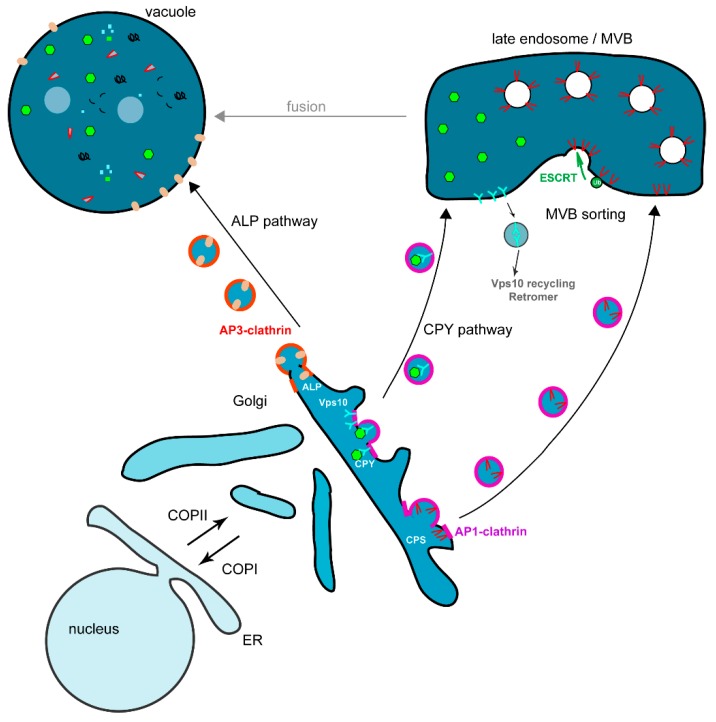Figure 3.
The Golgi to vacuole trafficking pathways. Two pathways transport proteins from the unstacked Golgi to the vacuole, either directly via the ALP pathway, or via the endosomes for the VPS CPY pathway. In the ALP pathway, the alkaline phosphatase ALP is packaged into vesicles through adaptor AP-3 interaction which in turn recruits clathrin. Vesicles are then fusing with the vacuole. The CPY pathway transports different vacuolar proteins, either membrane-bound as the CPS (carboxypeptidase S) or soluble as the CPY (carboxytpeptidase Y) pro-protease. The soluble CPY is recruited into the Golgi lumen through the binding of its receptor Vps10. Both CPY and CPS are loaded onto vesicles via the AP-1 adaptor and clathrin coat. After budding, vesicles are transported to the endosomes where they fuse liberating CPS to the endosomal membrane and CPY into the lumen. Vps10 is sorted away from the endosomal membrane to be recycled back to the Golgi for a new round of CPY transport by being loaded onto vesicles initiated by the Retromer complex. On the other hand CPS is loaded onto vesicles, which will bud into the endosomal lumen to give rise to the multivesicular body (MVB). This process requires first the ubiquitination of CPS as a sorting signal for the ESCRT (endosomal sorting complex required for transport) machinery (ESCRT-0 to -III), which will cluster CPS into invaginated endosomal membrane and pinch off vesicles. The MVB will then fuse with the vacuole and liberate its content into the vacuolar lumen to be processed.

